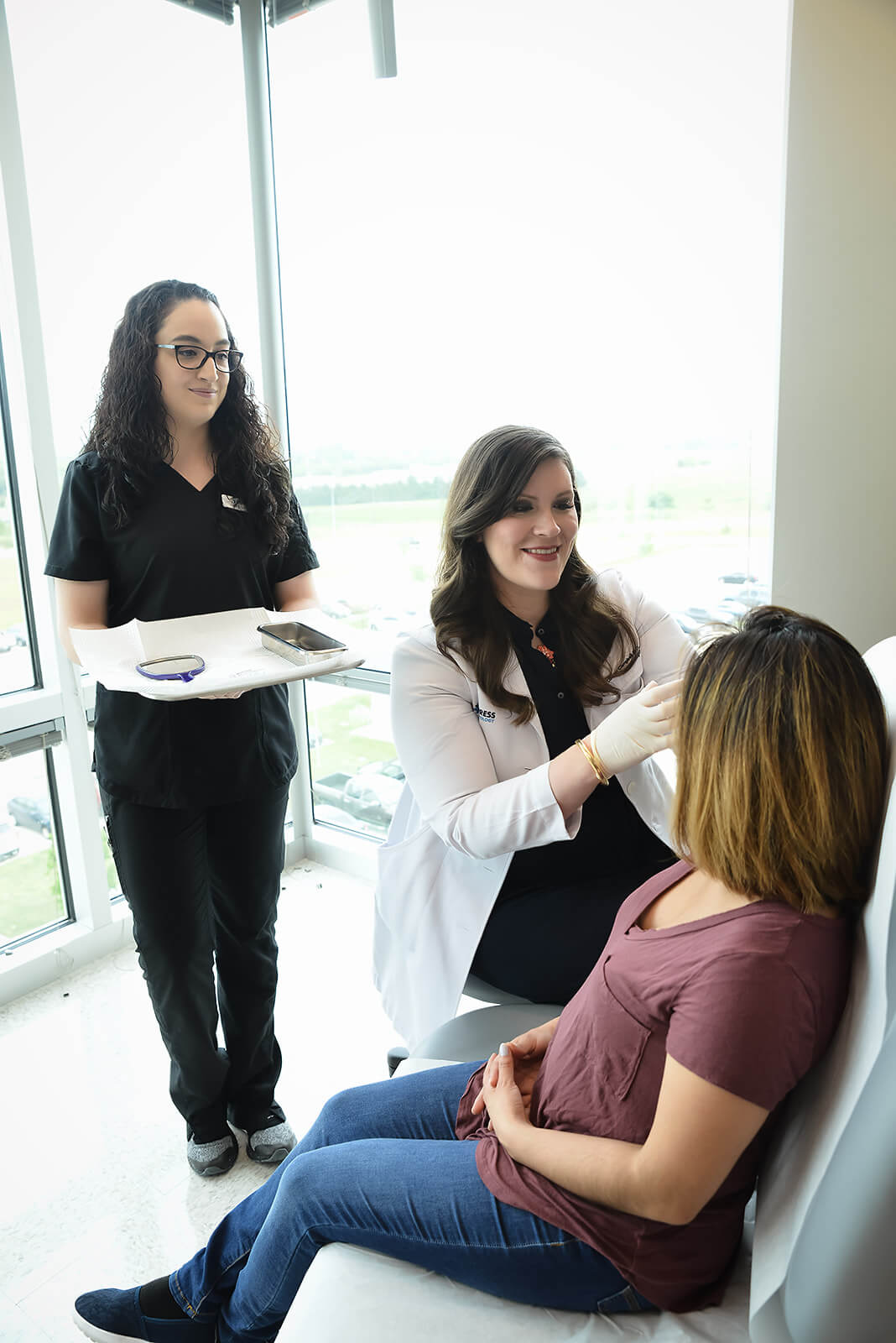
Everyone has a mole, freckle, or random spot somewhere on their body. Most are completely harmless. But how do you know if a mark on your skin is just a cosmetic feature—or a sign that something more serious is happening beneath the surface?
At Cypress Dermatology, our board-certified professionals help patients across Cypress, TX confidently navigate skin health. Whether it’s your first mole check or you’re monitoring an area of concern, understanding what to look for can make all the difference in early detection and peace of mind.
Moles are clusters of pigmented skin cells that appear as brown, black, or even skin-toned spots. They often form during childhood or early adulthood and can darken with sun exposure or hormonal changes. Most adults have 10–40 moles, and in many cases, they are nothing to worry about.
However, certain characteristics—like sudden growth, irregular borders, or changes in color—can signal a potential problem.
Knowing the differences among various skin spots can help you know what’s worth checking out.
Symmetrical in shape
Solid in color (usually brown or black)
Smaller than a pencil eraser
Remain stable over time
Flat, light-brown marks
Usually appear on sun-exposed skin
Tend to darken in summer and fade in winter
Not associated with skin cancer risk
Also known as liver spots
Occur in areas with chronic sun exposure
Typically harmless but can resemble cancerous lesions
Waxy, wart-like growths
Often mistaken for moles or melanoma
Generally benign but should be checked for peace of mind
Larger, irregular in shape
May contain multiple colors
Higher potential for becoming cancerous
Should be monitored closely by a dermatologist
When trying to assess whether a mole might be concerning, dermatologists recommend remembering the ABCDE rule:
A – Asymmetry: One half doesn’t match the other.
B – Border: Edges are ragged, notched, or blurred.
C – Color: Varies from one area to another; may include shades of brown, black, pink, red, or white.
D – Diameter: Larger than 6mm (about the size of a pencil eraser).
E – Evolving: The mole is changing in size, shape, or color.
Even if a mole doesn’t meet all these criteria, any change or new growth should be evaluated—especially if you’re at higher risk due to sun exposure, family history, or fair skin.
If you notice any of the ABCDE changes—or if something just “doesn’t look right”—it’s smart to schedule a professional skin exam. At Cypress Dermatology, we perform comprehensive mole checks and can help you monitor changes over time using dermatoscopic imaging and professional documentation.
Here are a few key signs it’s time to book a visit:
A new mole appears after age 30
A mole itches, bleeds, or crusts over
You have a family history of skin cancer
You have multiple moles or fair skin
You spend a lot of time in the sun or tanning beds
The most common types of skin cancer—basal cell carcinoma, squamous cell carcinoma, and melanoma—can vary in appearance and may not cause pain early on. This is why regular checkups are so critical. When caught early, most skin cancers are highly treatable and can be removed with minimal impact.
Our team is trained to spot both common and rare types of skin cancer. We offer biopsies, surgical removal, and follow-up treatment plans right here in our Cypress office.
In between checkups, it’s important to be your own best advocate. Follow these steps for at-home skin monitoring:
Use a full-length and hand mirror to examine your entire body.
Check areas you might not think about—like your scalp, the soles of your feet, and under nails.
Take photos of your moles to track changes over time.
Wear SPF 30+ daily and avoid peak sun hours (10 a.m. to 4 p.m.).
We’re not just your local dermatologist—we’re your partner in long-term skin health. From early detection to advanced care, we pride ourselves on providing personalized, compassionate treatment in a professional setting.
Patients trust us for:
Routine skin checks and mole mapping
Skin cancer screenings and removal
Expert dermatology consultations
Bilingual staff and a welcoming environment
Don’t wait until a spot becomes suspicious—early detection saves lives. Whether you’re overdue for a skin exam or have a mole that’s been bothering you, we’re here to help.
📍 Visit us at: 14930 Mueschke Rd, Cypress, TX 77433
📞 Call: 281-895-3376
🌐 Schedule online: https://cypressdermatology.com